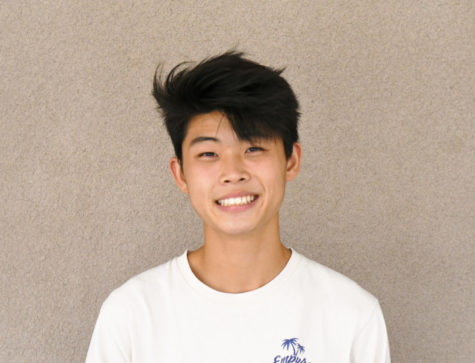Students experiment with colorful hair changes, develop stronger sense of self
October 8, 2021

Katie Jacques (12) sat patiently in a wood-plated chair as her hair-stylist streaked dollops of baby-blue dye onto her hair. As the dye set in, her hair was left a rich turquoise-green.
Jacques’ teal hair is the latest progression in her hair’s journey through the color wheel. Beginning with pink, Jacques has cycled backwards through the rainbow, traversing purple and blue before arriving at her current green.
For Jacques, hair dye has always been an avenue for playful exploration and experimentation.
“I like [dyed hair] a lot better than having [naturally colored] hair, just because I think it adds something different,” Jacques said.
Jacques views hair color within the scope of fashion, keying in on how different colors affect the overall aesthetic of a certain look.
“[If] I’m wearing something really plain, I feel like the green hair kind of makes it more unique,” Jacques said. “I thought [green] would be cool mashed with a lot of my clothes.”
For Blue Jain (10), dyeing hair plays a role beyond just physical alteration.
In the past, Jain struggled to maintain a strong sense of identity due to struggles with physical self-perception.
“I went through a lot in eighth grade and was diagnosed with [depression and anxiety]” Jain said. “It took a huge toll on how I saw myself.”
To cope with bouts of insecurity, Jain found solace in dying their hair.
“After things went wrong, or some bad thing happened, I would end up dying my hair,” Jain said. “[It’s] just a way to be like, ‘Hey, it’s okay. Calm down. You’re a new self.’”
Jain used hair color changes as a way to leave negative emotion with a ‘past self’ so that they could carry on with a clean slate. Through various color iterations—silver, purple, red, pink, blonde—Jain was able to develop greater self-confidence.
“[It’s] not just about having cool [hair] colors,” Jain said. “Being able to have that change once in a while was really refreshing. I was able to be more comfortable with my body.”
Similarly to Jain, Max Walpole (12) derives comfort from hair-dying—describing it to be therapeutic and adept in resolving “baby breakdowns.”
“Because of my mental health, I don’t have the [most] stable sense of identity,” Walpole said. “I look at photos from myself from not even a year ago and I do not recognize who that is.”
Aside from conscious color changes—a My Chemical Romance’s Gerard Way scarlet or a bright Monster Energy green—hair color changes generally accompanied significant events.
“Because of my mental health, I don’t have the [most] stable sense of identity. [I would experience] major events in my life and be like ‘Oh! New look: change up my hair,”’ Walpole said. “This most recent one was kind of just like a change in life path. I’m a senior, gotta do something cool.”
For Ensley Uyeda (12), hair color changes signify a shift in growth. Uyeda had naturally gravitated toward the colorful and vibrant elements of hair dye throughout her life but had felt pressure from her parents to avoid doing so. When Uyeda finally made the decision to bleach her hair to a honey blonde hue, it was an acknowledgment that she could let herself go.
“I was definitely able to be more true to myself when I realized I didn’t have to look a certain way for other people,” Uyeda said. “I was able to let go of a lot of expectations.”
In the past, Uyeda said she felt a constant need to reach a standard of success in sports, whether it be the range of sports that she participated in or number of shiny accolades she collected in a tournament. However, this “letting go” allowed her to take control of her own passions and establish her reasoning for pursuing them.
“I still play golf because I’m good and that’s what I’m doing [to] go to college,” Uyeda said. “But, I’m more relaxed about it and I don’t put as much stress on myself to achieve certain goals.”


